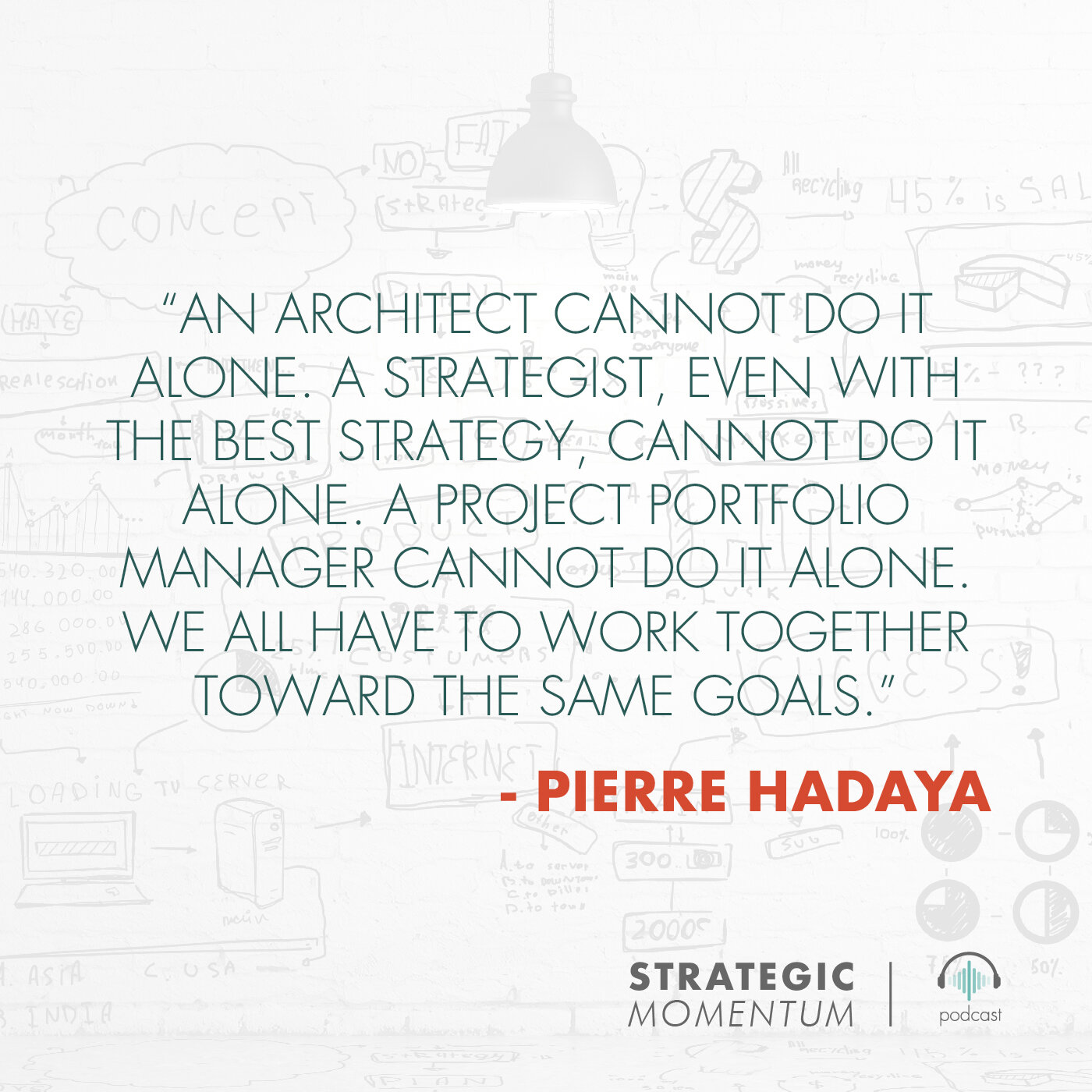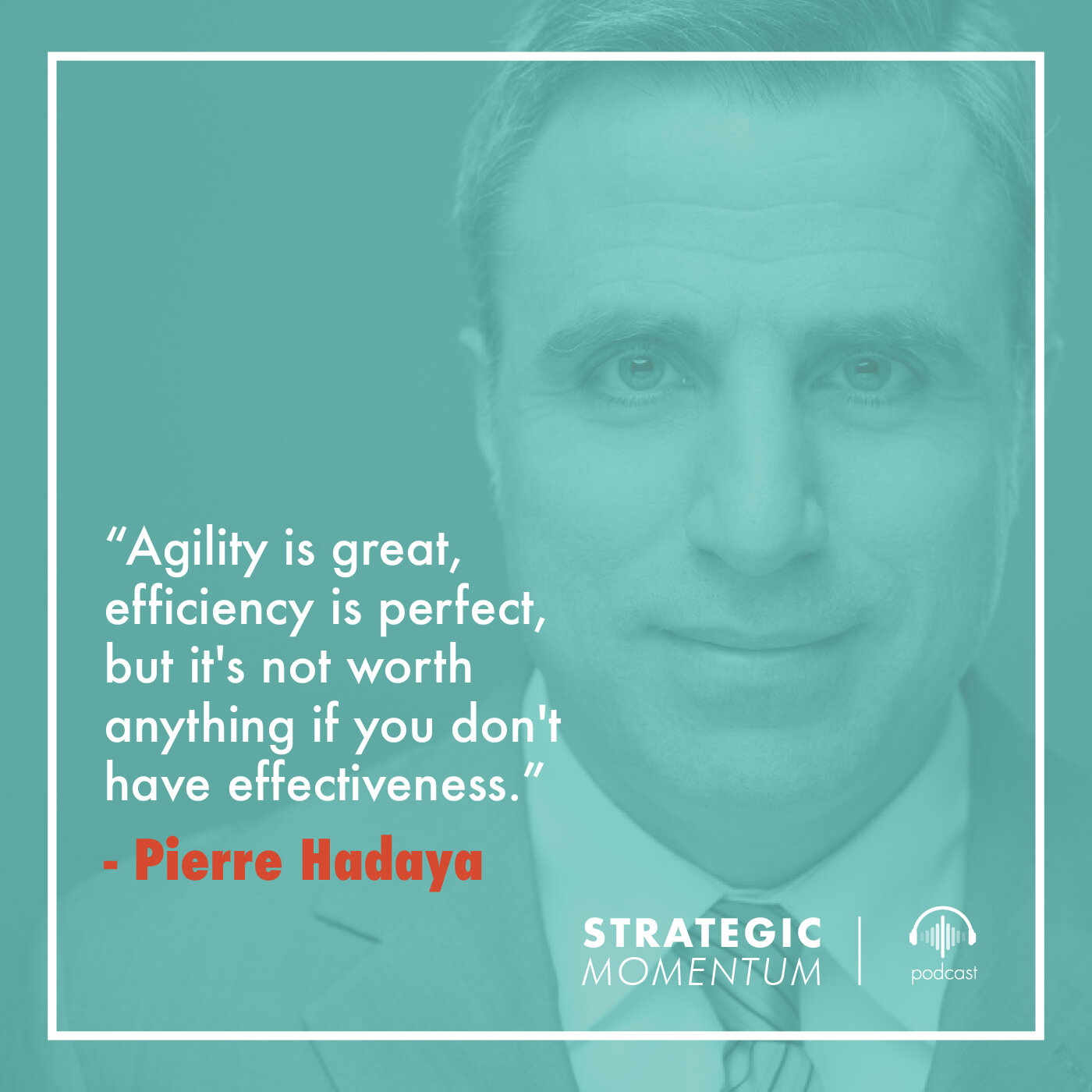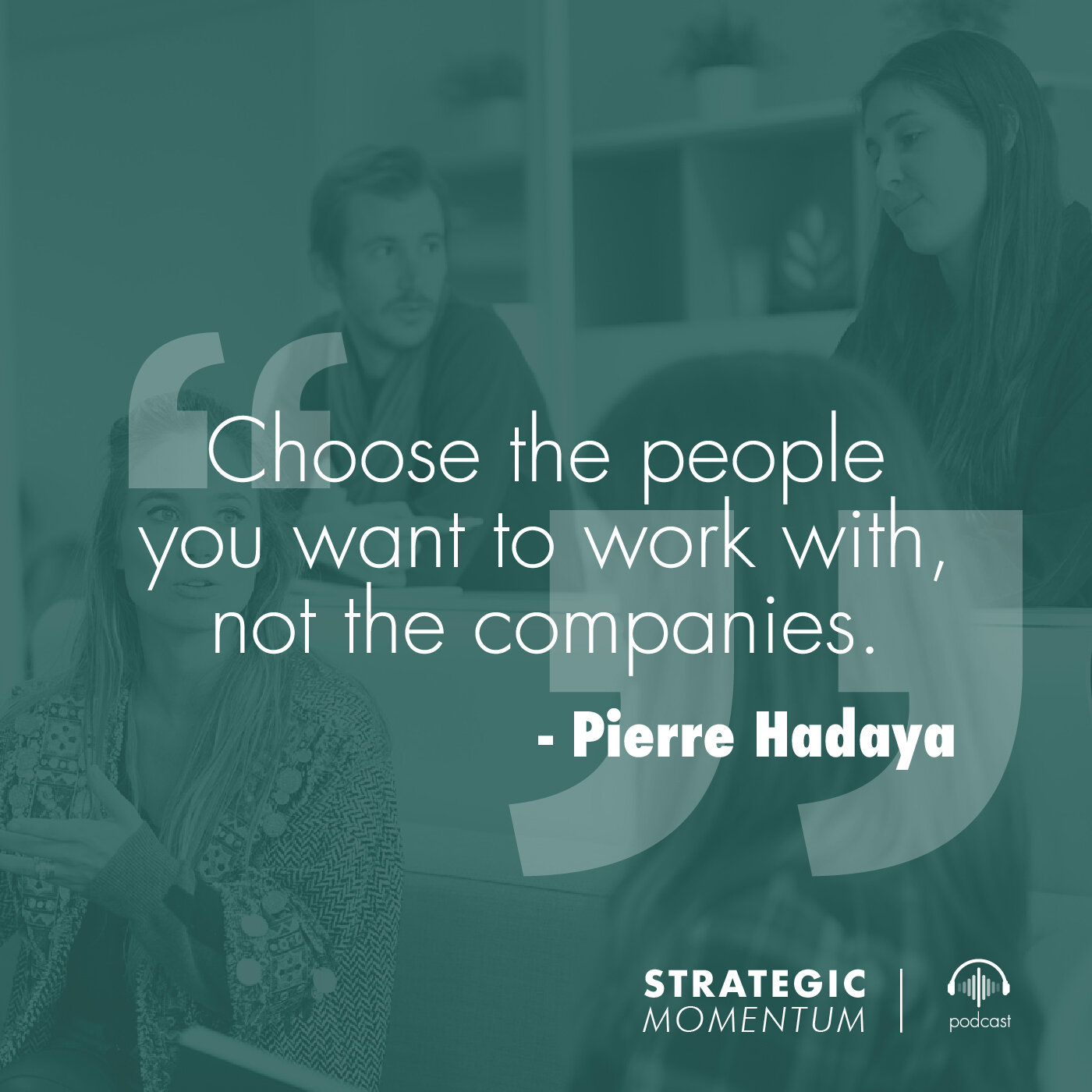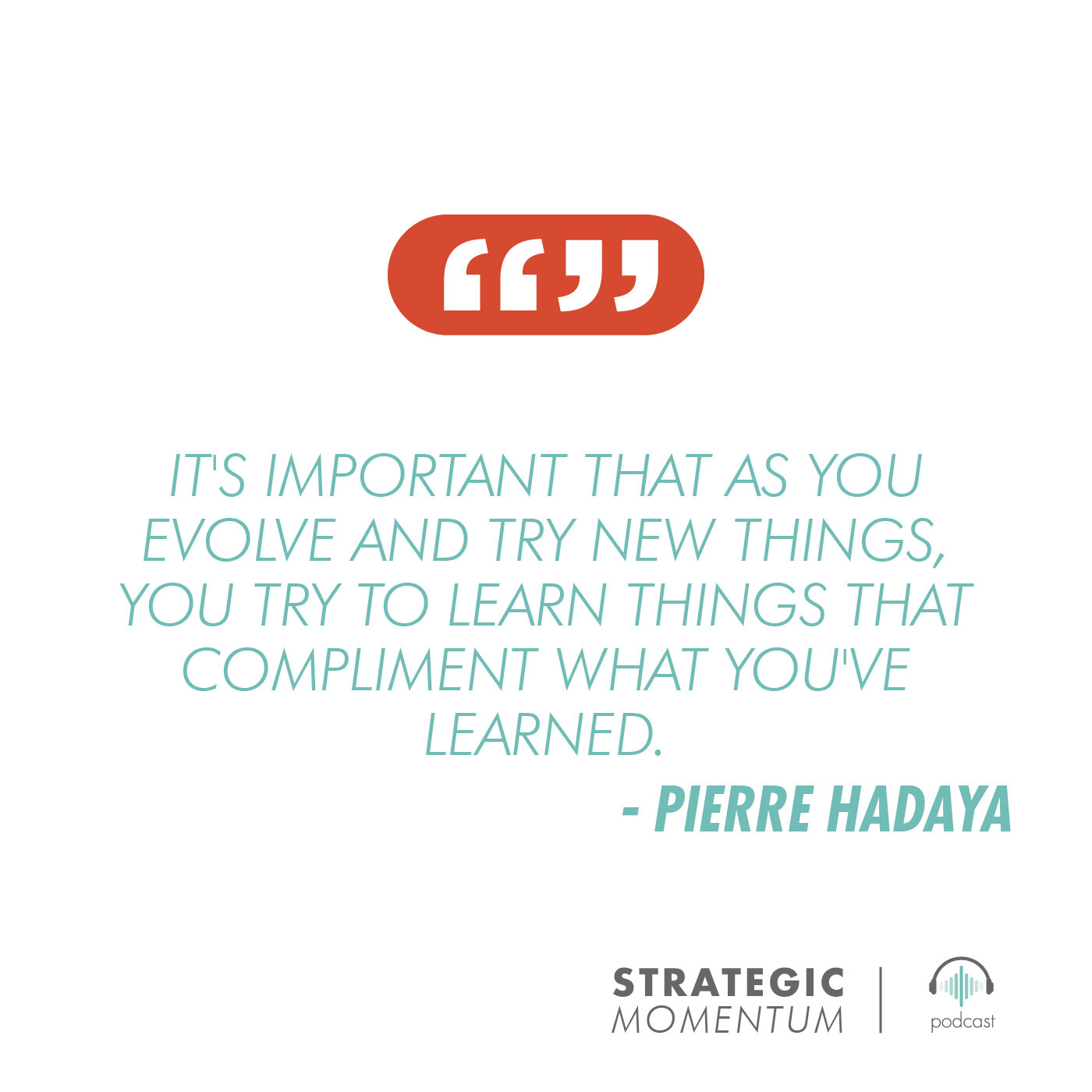Ep. 47 - The Business Architecture Approach: Realizing an Organizational Transformation from Strategy through Execution - with Pierre Hadaya
Find Us Wherever You Listen To Podcasts
This episode is presented in partnership with the Association of Strategic Planning. Their 2019 annual conference -- Strategy and Your Business Ecosystem -- is taking place in Denver from May 15-17. For more information, visit https://www.strategyassociation.org/
With continued market and competitive pressures impacting organizations today, companies are required to transform themselves to remain relevant. However, many are still struggling to effectively work through these transitions, despite the various practices they have adopted to help.
To break through that inertia, Pierre Hadaya believes it can only happen when thinking and operating in an integrated fashion. He is the author of Business Architecture - The Missing Link in Strategy Formulation, Implementation and Execution, full professor at the School of Management of the Université du Québec à Montréal, and co-founder of ASATE Group Inc., a management consultancy helping businesses transform effectively to become more innovative and competitive.
In this episode, Pierre discusses how to realize that organizational transformation through a Business Architecture approach – the building of a blueprint, a master schedule, and an architecture team to effectively guide you from strategy to execution.
Balancing Theory and Application, Business and Technology, and Discovering the Business Architecture Approach
Pierre always had a passion for the business side of technology, as he felt a foundational need to marry the theoretical perspective with the practical application. This drove his decision to minor in technology management while earning his Bachelors in Electrical Engineering, and then to go into the private sector after finishing his degree.
But the pace of the business environment didn’t always offer people time to think about what they were doing and why they were doing it, with the rigor Pierre thought was important. So he chose to go back to get his Ph.D. in Electrical Engineering, Technology and Management. Then, he stayed in academia as a professor. But after some time, he felt his impact was not as substantial as it could be, and he yearned to apply theory and research to help companies.
After reading a book on enterprise architecture, which proposed the practice from a business POV and not a technical way, he was hooked.
He applied, tested and researched the approach, ultimately working with fellow enterprise architect Bernard Gagnon to co-author their own book on business architecture. Now, along with continuing his work as a professor, Pierre and Bernard continue to apply this research through their his business consultancy, ASATE – Aligning Strategy, Architecture, Transformation, and Execution.
Identifying Business Problems to Define Strategy and Business Architecture
Through his work with large enterprises, Pierre has been able to identify and understand the major challenges businesses face in realizing their strategies.
What he sees happening most often is (1) a short-term focus on goals, (2) a lack of planning and evaluating throughout execution, and then (3) no universal understanding of what a strategy is. These faults manifest into implementation hurdles.
For instance, companies often pair short-term implementation with long-term budgets, only to see that short-term growth is happening slower than they anticipated and the budgets don’t support ongoing implementation.
So how do you prepare for these challenges in advance?
Pierre equates the business architecture approach with a construction project, which always has three things: a blueprint of the final design; a schedule for how they are going to build the structure, and with what materials; and the team of builders and engineers needed to execute the project. In the same way, having a business architecture plan will help you visualize the entire transformation and its challenges before you act.
This approach leads to an integrated effort where planning and executing happen in parallel to solve business challenges. Adopting this business architecture mindset requires the crossover of technology and business strategy, creating a common ground where everyone can work together toward the same goals.
Because, at the end of the day, forward momentum depends on not only identifying those missing links but creating the necessary connections to drive that alignment.
Pierre’s Career Advice:
Choose the people you want to work with, not the companies, because it is these people who are going to help you to go forward in your career.
Knowledge compounds, so as you evolve, keep learning and trying new things.
Choose people for your team who have a mindset of trying new things.
Key Takeaways:
The two common problems affecting strategy formulation are:
Thinking too much in the short-term.
Forgetting to plan, do, check, act
And there are two fundamental problems surrounding strategy itself:
People do not have a common understanding of what strategy is. Some companies may not even have a strategy, or if they do, it is not documented or is too implicit.
Many often fail to do a feasibility analysis as well to test the practicality of the strategy.
If you can identify implementation challenges and misconceptions early on, they can be addressed and avoided. These are some of the most common:
Not aligning long-term financial plans with the strategy. Companies invest too much early on, expecting fast results, and then start to decline when the results take longer to happen than anticipated. Alternatively, when results are realized faster than expected, companies stop investing in strategy and focus on reaping benefits – but this is very harmful in the long run.
Selecting projects that yield short-term results instead of going after more rigorous project with long-term benefits.
Appointing leaders that see the business side, but not the technology side.
Lacking governance: not having mechanisms in place for evaluating progress and pivoting throughout the project.
Misalignment: you need to ensure the business and IT sides have full transparency and collaboration throughout the transformation.
Like a construction project, a Business Architecture Plan approach has three main components:
Target Business Architecture = an overall, big-picture plan that will detail what's in the strategy. It outlines the business structure: the processes you're going to need, the capability, the information, the know-how, and how it’s going to function.
Transformation plan = master schedule, or the list of interdependent steps that compound upon one another until the final outcome is realized.
Business Architecture Team = executives, strategists, portfolio managers, and any other stakeholders whose input fuels the project and who are involved from beginning to end.
There are several considerations to keep in mind as you build an architecture plan:
The business architecture should focus on the business outcome while accounting for the tech side, not the other way around.
Each blueprint will have smaller, sub-blueprints for individual processes that make up the whole. But the whole blueprint must account for the entire operation, not just the tech or the business side.
You should never just launch a project. You need to master schedule so you know how each task moves toward the larger goal.
If your business architects are not involved completely from start to finish, the plan will not work.
Reorganization is not always the solution. Before you go back and change or rework something, remember the old units are still building blocks. “So, do not focus on one and only one building block to fix your problems. You have to master all of them.”
Find ways to motivate employees other than bonuses. “Business transformation is not going to work if everybody has his own bonuses and objectives.”
What to think about as you are executing your plan:
Always think: plan, do, check, act. Do not act before planning.
Effectiveness before agility and efficiency.
Prioritize long-term benefits over short-term ones.
Think holistically across functions throughout formulation, implementation, and execution.
Engage people – business architects should be the best salespeople for the plan because they know the whole story, enough to motivate people with the big picture plan.
Do not think you can do it alone. You need a team to build out the entire strategy.
Resources:
Connect with Pierre on LinkedIn
Visit ASATE Website
Buy Pierre’s Book
Register for Pierre's Session at the ASP Conference
Learn more about ASP: The Association for Strategic Planning
Register for Strategy and Your Business Ecosystem Conference
Subscribe to the Strategic Momentum podcast:
On Spotify












